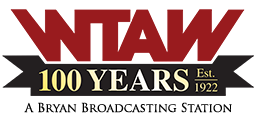
More changes could be coming to the operations of Texas A&M University, its sister universities around the state, and system agencies.
Through April 26th, the A&M System is receiving proposals from consultants interested in studying, making recommendations, then implementing changes.
There are two RFP documents, which you can access by the links below.
The system wants whoever it hires to come up with what it calls an organized and detailed outline of specific and practical opportunities to improve administrative efficiencies.
That could include more outsourcing and changing organizational structures.
Faculty and staff would be called on to identify what is administratively inefficient or ineffective.
The system wants the cost and timeline to implement each recommendation, associated cost savings by fiscal year, and the resulting return on investment.
The system wants to identify cost savings from making administrative changes and apply them to core functions that include teaching and research.
Click HERE to read the RFP applying to A&M and the Health Science Center.
Click HERE to read the RFP applying to A&M System agencies.
Through the direct review of the agencies’ administrative structure, utilizing as a starting place the organizational structures attached to this RFP, RESPONDENT shall:
3.2.1 Identify, through appropriate benchmarks, the administrative functions and services that appear to be unnecessarily expensive and could be delivered more cost effectively;
3.2.2 Identify unnecessary duplications in functions and services within and across the agencies;
3.2.3 Without compromising agency structure, function, and ability to meet its statewide mission, identify opportunities for altering the number of organizational layers that make up the agencies’ current organizational design, including positions where the span of control appears to be too narrow;
3.2.4 Identify functions or services that are candidates for being delivered more efficiently, without a loss of service quality and without significant negative effect on agency mission, through an outside vendor;
3.2.5 Identify process that are not performed using best practices especially those processes that have been identified by faculty, staff, and/or constituents as administratively inefficient or ineffective;
3.2.6 Identify potential resources available to assist the TAMUS in implementing the identified opportunities.
3.3 Contract Deliverables-The deliverables provided in response to the scope of services shall include the following and shall be developed after discussions with agency leadership:
3.3.1 Detailed recommendations for organization design changes that would enable unnecessary duplicated functions and services to be provided in a more cost-effective manner including alternative delivery options such as shared service operations across multiple units within an agency;
3.3.2 Detailed recommendations for organization design changes for reducing the number of organizational layers that make up the agencies’ current organizational design including positions where the span of control appears to be too narrow;
3.3.3 Detailed recommendations as to how processes that have been identified by faculty, staff, and/or constituents as administratively inefficient or ineffective could be delivered more effectively through process redesign or through improved use of technology;
3.3.4 An outline of the most effective administrative structure for the efficient and costeffective delivery of services and for the provision of adequate oversight to enable the agencies to achieve their mission. The outline should include an analysis of any risks associated with any change in administrative structure, as well as any actions that could
be taken to mitigate those risks.
3.3.5 An organized and detailed outline of specific, actionable, practicable opportunities for improving administrative efficiency, service delivery and cost-effectiveness, including an estimation of the cost and timeline for implementation of each identified opportunity, associated cost savings by fiscal year, and the resulting return on investment.
